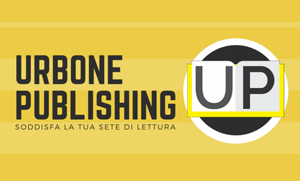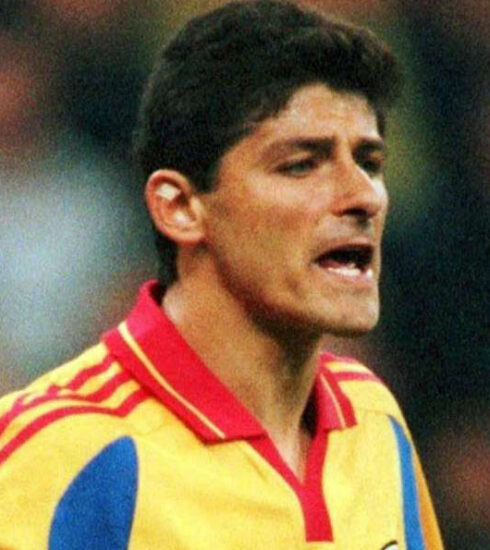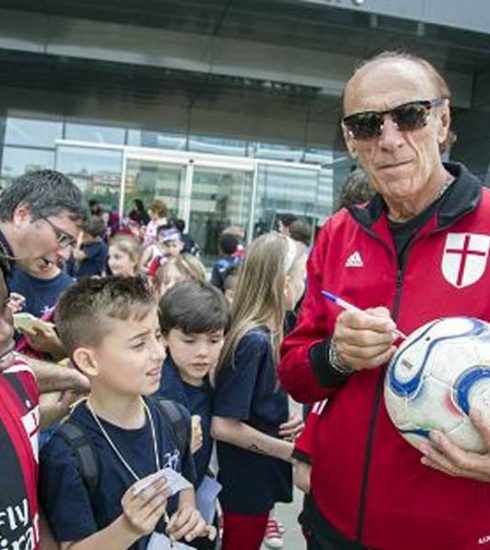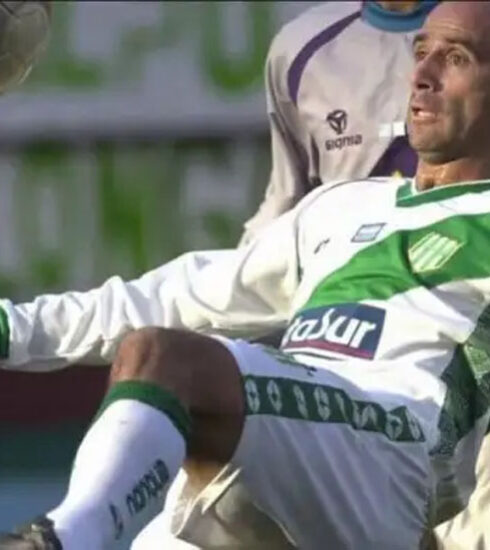TEOFILO CUBILLAS: Icon of an entire people
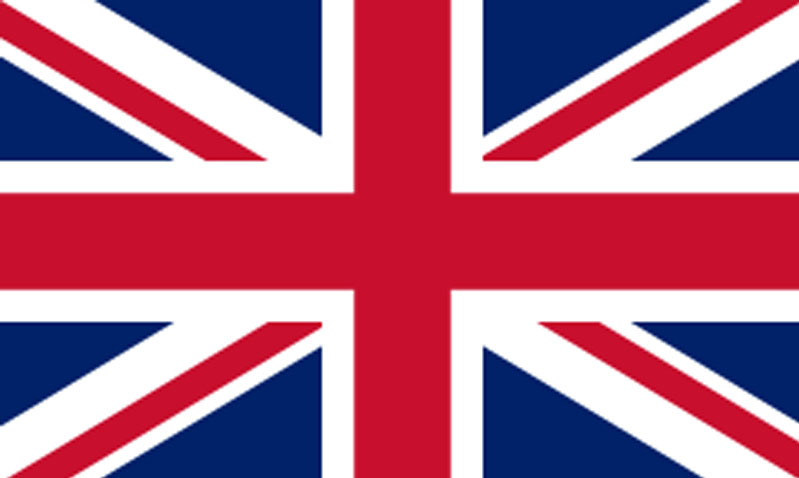

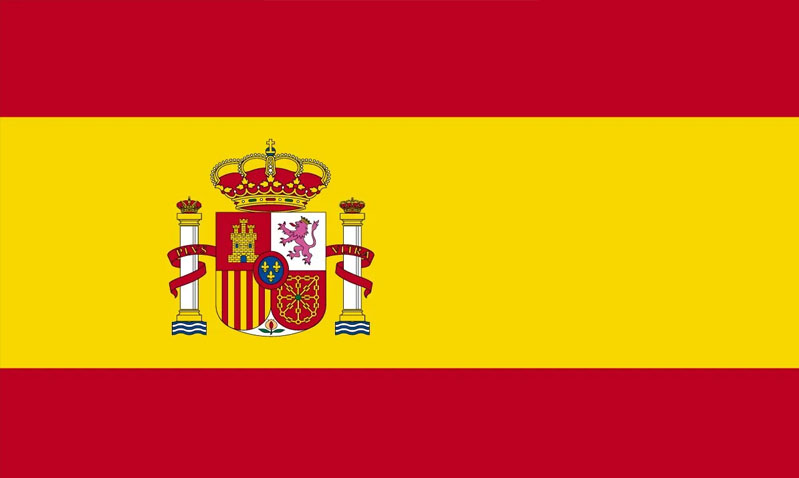
No. We didn’t deserve this.
Not after what our boys had been able to do.
Against all the predictions of all the observers, all the football media and probably all our own fans.
Nobody on that 31 August 1969 was giving us a chance.
We had already pulled off a miracle in the first leg when we beat the Argentinians in Lima by one goal to nil. Perico” Leon scored and when we beat Bolivia three goals to nil two weeks later, an unforeseen and unforeseeable scenario opened up for us: with a draw in Buenos Aires in the last match of the qualifying round, we would go to Mexico for the final phase of the World Cup.
That had never happened before.
Yes, we did play a World Cup.
The one forty years earlier in Uruguay. But in that case there was no need to qualify. From then on only bitter disappointments.
True, we had two good results out of three but we were all convinced that this time too it would end exactly like all the other times. We would have cursed the bad luck and maybe ended up cursing that unfortunate own goal by Chumpitaz in Bolivia ten minutes from the end that cost us that little point that would now make the trip to the Bombonera platonic, or maybe we would have been angry with that delinquent Venezuelan referee who, again in La Paz, cancelled a goal where only he was able to see something irregular.
Instead, we went to the Bombonera knowing in our hearts that in front of their public Argentina would not miss such an opportunity.
Argentina, who had never before failed to qualify for the World Cup at home, against Peru, who had never before failed to qualify for the World Cup.
Instead the miracle happened.
Our boys were wonderful that day.
The Bombonera was bedlam but they were not impressed.
Someone said they were so young that they were reckless!
Maybe so.
All I know is that they fought like lions.
Oswaldo Ramirez gave us the lead with twenty minutes to go.
All the Argentinians’ aggression and eagerness went out like a match in the wind.
No, it was not going to be as easy as in the eve’s proclamations where they said they would tear us to pieces.
But it was Mr. Diaz, the Chilean referee, who gave the Argentinians hope again by inventing a penalty kick that to call it ‘generous’ is an embarrassing understatement.
At that point there were ten minutes left.
An infinity.
“Here we go again. We’ll come within a whisker of it and then it will all end as always. With a fistful of flies in our hands,’ I thought at that very moment.
I was very wrong.
I had not yet finished formulating this gloomy thought when I saw Cruzado intercept a pass from Brindisi. The ball slammed into his shin, splashing forward. There were only two players on that ball. Their defender Perfumo and our Ramirez.
Ramirez actually seemed a few metres behind.
Instead he anticipated the Argentine defender and launched himself towards the goal defended by Cejas. On the Argentine goalkeeper’s exit he crossed the ball to the opposite side with his left.
The ball ended up in the back of the net.
We were back in the lead.
This time there were only eight minutes left.
Eight interminable minutes.
Which became agony when Rendo scored the Argentine equaliser.
Two to two.
And two was also the number of minutes remaining.
Those two minutes (which actually became almost four) were the longest in my country’s football history.
But they passed.
And Argentina did not score the goal that would have qualified them for the World Cup … and that would have sent us, for the umpteenth time, back to hell.
Joy, disbelief, liberation, euphoria, ecstasy … you name it.
They all fit to define how more than 13 million Peruvians felt at that moment.
From that moment on, the country went crazy.
No, I am not exaggerating.
I met people who, in order to be able to go to Mexico to support our boys, had taken out loans from banks, sold their cars or had their severance pay brought forward at work.
Because the question we were all asking ourselves was the same: ‘When will it happen again? When will we play a World Cup final again? Forty years from now? Maybe fifty or maybe never again’.
Better not to risk it, then!
This collective euphoria showed no sign of dying down.
On the contrary, the closer we got to the World Cup, the more the enthusiasm grew… artfully fuelled by a dictatorship riding the wave of this unexpected and wonderful sporting achievement. By now we were counting the days until our boys’ debut.
On the second of June, Bulgaria awaited us.
But before that three June came 31 May.
And here finding the words is impossible.
The country was hit by a devastating earthquake.
An entire city, Yungay, was destroyed.
7.5 on the Richter scale.
Never seen anything like it.
An enormous avalanche of rock, earth and ice came off the Huascaran mountain, which overlooked the city.
The people were almost all in their homes. The first game of that World Cup was on television.
A few hundred people were saved … those who managed to get to the cemetery, which looked down on the city from above.
Between the dead and the missing, there were almost a hundred thousand lives that did not see that World Cup, so eagerly awaited and longed for. Just as they did not see anything else.
No, we did not deserve this.
Peru took the field less than forty-eight hours later. Peru played and won that match against Bulgaria, as they also won the next one against Morocco.
The absolute star of those two matches was a very young offensive midfielder named Teofilo Cubillas. It was his goal that gave Peru victory in the first, very tight match against Bulgaria, and also his double that effectively extinguished Morocco’s ambitions in the final three-nil.
In the third match, with qualification for the quarters already in the bag, Peru succumbed to the West German team of a wild Gerd Muller, but the Peruvian flag-bearer goal in the final three to one in favour of the Germans was again the work of Cubillas.
In the quarters for the Peruvians, the clash is prohibitive. Facing them is Brazil, who have already defeated defending champions England in the group and are considered the big favourites for the final victory.
It will be a more than honourable four to two for the Peruvians and Cubillas will score again. For him five goals in four games and for Peru the return to his homeland, with the country still in shock, will be greeted with great enthusiasm and fervour. And Teofilo Cubillas from that moment on will be, for almost twenty years, the symbol of Peruvian football.

Teofilo Cubillas was born in Chincha Alta, a town about 200 km south of Lima.
Alianza Lima included him in its youth sector. The talent of ‘Nene’, as Cubillas is called by everyone, is undisputed.
At the age of sixteen, he made his debut in the first team and in that very first season, playing as an advanced midfielder, he immediately won the goalscoring charts with 19 goals.
It is immediately clear to all Peruvian football fans that they are dealing with a boy of exceptional qualities.
Exactly the same age and also blossoming at a very young age is Hugo Sotil, a very quick striker with great technique.
It was they who, together with the already established Héctor Chumpitaz, one of the strongest defenders in the history of South American football, the director Roberto Chale and the centre forward Oswaldo Ramirez, formed the backbone of that national team capable of remaining at the top of South American football throughout the 1970s.
After the excellent results in Mexico Cubillas returned to his homeland. He won the league’s goalscorer’s classification and at this point something very peculiar and uncommon in the history of football happened.
The spectacle offered in the national team by Cubillas and Sotil (renamed the ‘Dupla de oro’) is so appreciated that the two teams where the Peruvian football stars play (Alianza Lima and Deportivo Municipal) decide to unite and form one team. The occasion was Bayern Munich’s planned tour of Latin America.
On 7 January 1971, Beckenbauer, Muller, Maier and their teammates were beaten four to one and Teofilo Cubillas was the star of the match, scoring a brace.
Cubillas’ star shone ever brighter.
In 1972 he won the title of ‘Best Footballer in South America’.
Behind him in this special ranking was a certain Edson Arantes do Nascimento.
The following year, the other half of the ‘Dupla de Oro’ Hugo Sotil signed for none other than the Barcelona of Johann Cruyff, Carlos Rexach and Juan Manuel Asensi.
At this point it seems almost obvious that a move to a big European club is imminent for Cubillas as well.
It was in 1973 that Cubillas was selected to play in a friendly between the best players in South America against a European selection.
On that late October evening at the Nou Camp in the Nou Camp there were Cruyff, Eusebio and Beckenbauer on one side and Rivelino, Brindisi, Luis Pereira and all three Peruvian ‘phenomena’: Chumpitaz, Sotil and Cubillas … who scored three of the four goals for the South American team in the four-four final.
At that point, something totally unexpected happened in Cubillas’ career: while his friend ‘El Cholo’ Sotil was pushing with the Barcelona directors to convince them to buy his friend ‘Nene’ ahead of competition from the biggest Spanish and Portuguese teams, a wealthy Swiss businessman, Ruedi Reisdorf, appeared on the scene.
Reisdorf wants Cubillas for his Basel at all costs.
He offers the Peruvian $100,000, a large sum for the time.
Cubillas has no intention of moving to that small, semi-unknown team.
But as Reisdorf won’t give up Cubillas raises. “Three hundred thousand dollars or no way.”
It’s a crazy amount. Cubillas is quiet. Nobody can pay him that kind of money.
No one … except Ruedi Reisdorf, who grants the Peruvian midfielder’s request and takes him to his Basel.
Cubillas has no alternative. He played ten matches, scored three goals and contributed to the ‘RotBlau’s’ title win.
The cold climate in Switzerland affected his performance not a little.
Cubillas asked for a transfer.
Ruedi Reisdorf had no intention of giving up his star player.
After a gruelling negotiation, Porto managed to obtain Cubillas’ card.
It takes 400,000 dollars, but the impact of Teofilo Cubillas is immediate.
In Portugal he plays four unforgettable years in which he will enter the legend of the ‘Blue Dragons’. The championship will remain a chimera (two second places and a third) but a Portuguese Cup will come and above all the memory of absolutely fantastic performances and goals. He would score 65 in 108 official matches, a score that would make many a pure striker happy.
At that time, however, came the great disappointment of not participating in the 1974 World Cup in Germany. Peru lost the play-off against Chile (who then played the famous ghost match against the USSR in the play-off) and had to forfeit the German competition. Cubillas was injured that day. There is no one in Peru who is not convinced that with ‘El Nene’ on the pitch things would have been different …
For many observers, this is the strongest Peru in history. Cubillas and Sotil are in their prime, just as Chumpitaz, Ramirez and Challe have reached full maturity.
They would make up for it the following year by winning the Copa America in authoritative fashion, eliminating Brazil in the semifinals and Colombia in the final after a play-off.
The call of his homeland is too strong, however. And despite important requests from several European clubs Cubillas decided to return to his homeland. Obviously to his Alianza Lima … where, however, this time he found his ‘twin’ Sotil with whom he would play two memorable seasons. Two consecutive titles and in 1978 even a brilliant run in the Copa Libertadores to reach one of the two semi-final rounds.
In 1979 came another controversial choice: ‘El Nene’ decided to embark on an adventure in the US NASL. Waiting for him were the Fort Lauderdale Strikers, an authentic battleship full of great ex-footballers like Gordon Banks, George Best and Gerd Muller. Only while these three champions are in the twilight of their careers, Teofilo Cubillas, at only 30 years of age, is still in top condition.
He would stay five seasons with the Florida club, reaching the championship final in 1980, but losing out to the New York Cosmos of Franz Beckenbauer, Wim Rjisbergen and Giorgio Chinaglia. He became the highest scorer in the club’s history with 59 goals (and 61 assists!) in 120 games.
He hung up his boots (or at least that was his intention…) at the end of 1985.
On 16 April 1986, his farewell to football was celebrated. At Alianza Lima’s ‘Matute’ stadium there were almost 35,000 people there to bid farewell to their idol. In front of him was a selection with many of South America’s best players such as Chileans Elias Figueroa and Carlos Caszely and Brazilians Paulo Cesar and Marco Antonio, and alongside him, for the first time in Alianza colours, was ‘El capitan de America’ Héctor Chumpitaz.
Not even this time Cubillas betrayed expectations. The final goal of the three to one final for his Alianza was scored by him thanks to a penalty kick he himself had won.
Thirty-seven years old, after a career of great depth, is the right age to leave playing football and devote himself to his family and in particular to little Johana.
Fate, as often happens, however, decided otherwise.
It is 8 December 1987. Players and coaches of Alianza Lima are returning from their trip to Pucallpa, where in the afternoon they had played and won a league match against the local team Deportivo.
The small charter carrying the team sank into the ocean off Callào, the country’s most important port.
Of the 44 on board there was only one survivor: the pilot Edilberto Villar, who was mainly responsible for the incident.
It is an authentic tragedy that shakes the whole country.
The gestures of solidarity are many.
Teofilo Cubillas cannot remain indifferent.
He returns to the field with ‘his’ Alianza, which needs him.
Thirteen games to go before the end of the championship.
Cubillas plays them all, scores four goals and helps Alianza reach second place in the final standings.
He will play a handful more matches in the United States before hanging up his football boots, this time for good.
At the age of forty, twenty-four of them as a professional footballer.
‘The strongest Peruvian footballer ever’.
Nobody in Peru has a single doubt about that.
ANECDOTES AND CURIOSITIES
To write about the individual awards won by Teofilo Cubillas in his career would be to fill a whole page of this tribute. We will therefore limit ourselves to mentioning the main ones, in order to highlight the greatness of this immense footballer.
– Best young player at the 1970 World Cup in Mexico
– Best footballer in the 1975 Copa America
– Named among the 50 best footballers of the 20th century by IFFHS
– Named among the 100 best footballers of all time by World Soccer, Placar, France Football and FourFourTwo
– Best foreign footballer ever in Porto
– Best ever footballer in the Fort Lauderdale Strikers
Teofilo Cubillas regards the goal against Bulgaria in the first match of the 1970 World Cup in Mexico as the most important of his career. It was played two days after the terrible earthquake that devastated Peru.
Bulgaria were two goals ahead at the start of the second half.
Gallardo and Chumpitaz brought Peru back on level terms before Cubillas, with a quarter of an hour to go, managed to score the winning Peruvian goal.
“That goal changed everything. It gave confidence back to all of us and above all a smile to my people who were suffering in their homeland’.
Peru returned to the World Cup in Argentina in 1978.
And Cubillas proved to be a star of the first magnitude. The decisive match for qualification in a group that also includes Holland and Iran, is the first of the whole group. Scotland and Peru face each other in Cordoba on 3 June 1978. It was the Scots who took the lead with a goal from Joe Jordan but after César Cueto equalised it was ‘El Nene’ Cubillas who took centre stage scoring two wonderful goals. The first is a broadside from outside the box that slips under the crossbar of Alan Rough, the Scottish goalkeeper. But it is the second goal, that of the final three to one, that will go down in history for its beauty and uniqueness.
There is a free kick a few metres outside the Scottish box, a few yards from the left vertex of the penalty area. The classic inside-foot shot is expected. Cubillas observes the placement of the barrier and then, with the outside of his right foot, hits the ball with such force and effect that it goes around the Scottish barrier and finishes its run into the crossbar of the posts.
It will go down as one of the most beautiful spot-kick goals in the history of football.
Cubillas would then score a hat-trick against Iran, qualifying Peru for the next round, where three defeats came, the last of which was the famous one against Argentina, whose six-nil win over the Peruvians meant they qualified for the final against Holland. Regarding the rumours, which have never definitively died down, about what happened that night, Cubillas has always given a blunt and blunt answer. “Nobody came to visit us in the locker room and nobody made us promises of any kind. We played the game trying to win it and in the first minutes we even came very close … only to collapse physically and psychologically after the third Argentine goal.”
Cubillas would play another World Cup in his career. The one in Spain in 1982, but without making as much of an impact as in the previous ones, being eliminated in the first round after draws with Italy and Cameroon and a narrow defeat against Poland.
Teofilo Cubillas’ absolute idol was Pelé, from whom Cubillas always admitted he had been inspired since childhood.
At the end of the Mexico 70 World Cup, Pelé was asked if those would be his last World Cup.
“Even if it was, you don’t have to worry. My successor is already there: his name is TEOFILO CUBILLAS’ was ‘O’Rey’s’ reply.
… Apparently Cubillas, when he heard of this phrase, did not sleep at night …



